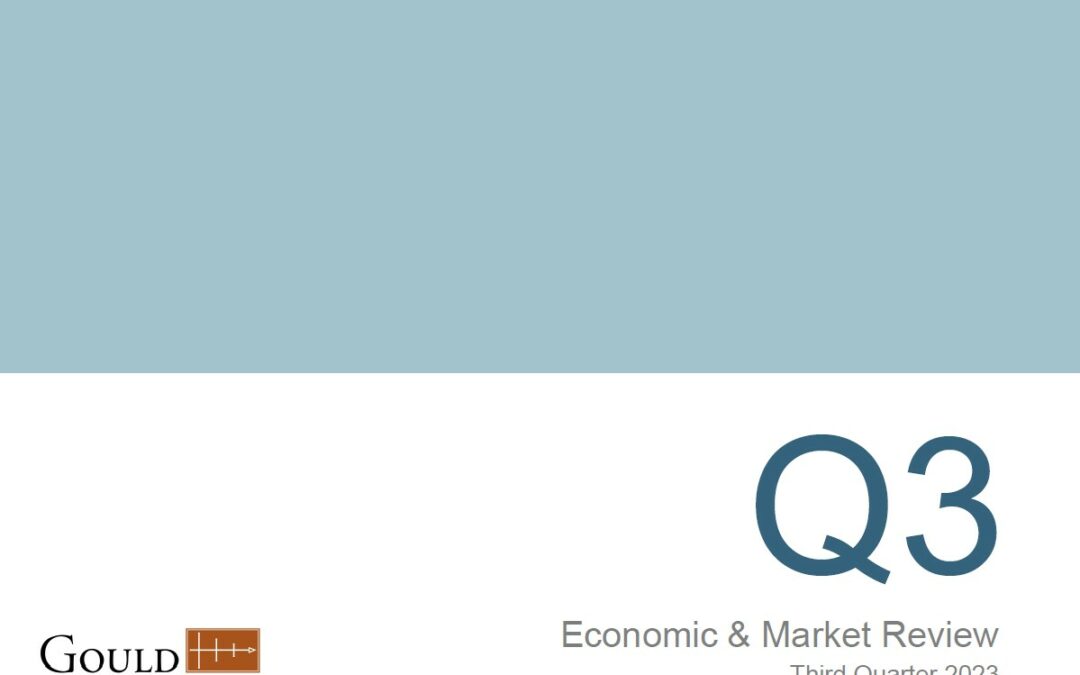by The Gould Asset Management Team
Note: This post is an excerpt from Gould Asset Management’s Economic and Market Review for the Third Quarter of 2023. The excerpt is posted here for the benefit of our blog subscribers.
US Economy Steady Amidst Headwinds
The US economy grew at a 2.1% annualized rate in the second quarter, a slight deceleration from the previous quarter but still a healthy clip.
The labor market proved resilient in the third quarter, adding 336,000 jobs in September, the fastest pace in eight months. Wage growth moderated to 4.2% year-over-year and the headline unemployment rate remained unchanged at 3.8%.
Manufacturing activity continued to contract in the third quarter, with the ISM Manufacturing PMI consistently below the neutral level of 50. September marked the eleventh straight month of contraction, the longest stretch since the Great Recession. Falling input prices and a rebound in hiring provided a glimmer of hope.
Housing market challenges continued this quarter, with new home starts and sales declining amid rising mortgage rates. Existing home sales also fell due to limited inventory and affordability issues. Despite these issues, demand for housing remains robust.
The Fed – Higher for Longer
The Federal Reserve maintained its federal funds rate at a range of 5.25% to 5.50% after a 0.25% rate hike earlier in the quarter. The pause indicates the Fed’s cautious and data-driven approach to tightening monetary policy, allowing time to assess the cumulative effects of previous interest rate hikes on the economy.
Still, Fed Chair Jerome Powell delivered a sobering message for financial markets – borrowing costs must remain higher for longer against a backdrop of sticky inflation and renewed strength in the economy.
Updated Fed projections show a stronger economy and job market in 2023-24 than previously forecast in June. As a result, the Fed expects to maintain a hawkish stance, penciling in one more interest rate hike before year-end. The Fed also expects to make only two interest rate cuts of 0.25% next year instead of the four they were projecting a few months ago.
To continue reading, please see our entire Economic and Market Review.

